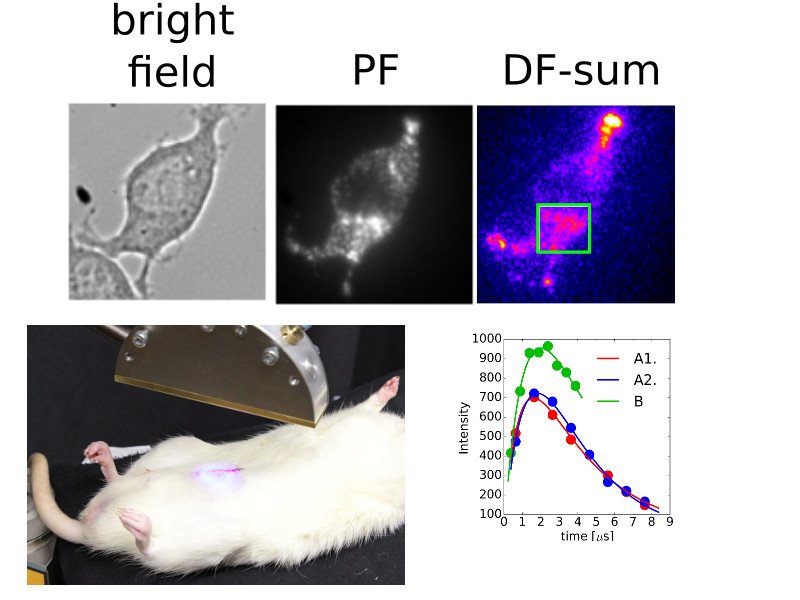Delayed fluorescence for singlet oxygen detection
Advisor: Roman Dědic (DCPO FMP CUNI)
Funding: Basic scholarship. Additional grant supplements depending on pending grant application
Website: https://physics.mff.cuni.cz/kchfo/oos/Roman/
Contact: Roman.Dedic@mff.cuni.cz
Photodynamic therapy is an effective treatment modality for many chronic and oncological diseases. Photodynamic inactivation is a new method of combating microbial diseases especially against pathogens immune to antibiotic/antimycothic treatment. In both of these methods, the highly reactive singlet excited state of oxygen, which results from the transfer of excitation energy from a light-excited drug molecule, the so-called photosensitizer, plays an essential role. To understand the details of mechanism of action and further improve these therapeutic methods, it is necessary to monitor the formation and behavior of singlet oxygen directly in biological and model systems. This is possible directly by measuring the kinetics of infrared luminescence of singlet oxygen. However, the signal is very weak and its detection is technically very demanding. On the other hand, it is possible to obtain information on singlet oxygen kinetics from the singlet oxygen-sensitized delayed fluorescence of the photosensitizers, which is order of magnitude stronger and lies in the visible part of the spectrum, therefore it is much easier to detect. This also allows the microscopic imaging of singlet oxygen in the organelles of living cells. The student will study the behavior of singlet oxygen in model systems, cell cultures, and tissue models by measuring the temporally and spatially resolved delayed fluorescence of photosensitizers. Experiments will be carried out at the microscopic level using a fluorescence microscope as well as a newly developed apparatus for simultaneous detection of singlet oxygen luminescence and delayed fluorescence of photosensitizers from macroscopic samples. Various photosensitizers will be investigated, including modern nanoparticle photosensitizer carriers. The expected knowledge of the candidate at the level of the completed master's degree in biophysics and chemical physics.
References:
[1] GOMER, C. J. (Ed.). Photodynamic Therapy: Methods and Protocols. 635 / Methods in Molecular Biology. New York, USA : Humana Press, 2010.
[2] SCHOLZ, M. and DĚDIC, R. Singlet oxygen-sensitized delayed fluorescence. Ch. 28 in NONELL, S. and FLORS, C. (Eds.) Singlet Oxygen: Applications in Biosciences and Nanosciences, Royal Society of Chemistry, 2016, 14, 63-81.
[3] SCHOLZ, M., et al. Singlet oxygen-sensitized delayed fluorescence of common water-soluble photosensitizers, Photochemical & Photobiological Sciences 12, 2013, 1873-1884.
[4] SCHOLZ, M. et al. The singlet-oxygen-sensitized delayed fluorescence in mammalian cells: a time-resolved microscopy approach. Photochemical & Photobiological Sciences 14, 2015, 700-713.
[5] SCHOLZ, M. et al. Microscopic time-resolved imaging of singlet oxygen by delayed fluorescence in living cells, Photochemical & Photobiological Sciences, 2017.
[6] HENKE, P. Fotoaktivní polystyrenové nanomateriály produkující singletový kyslík, Disertační práce, PřF UK 2017.


